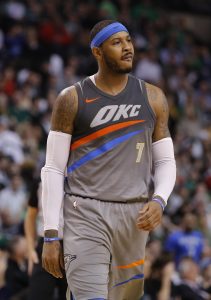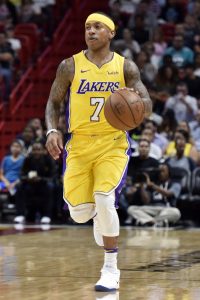Last Wednesday, we noted that only three NBA teams still had significant cap room available. Depending on your definition of “significant,” that’s still the case. One of those three teams – the Kings – made a player for another’s restricted free agent, but the Bulls matched Sacramento’s offer sheet for Zach LaVine and still have plenty of flexibility themselves.
While the Kings, Bulls, and Hawks are still the only teams that can create more than $15MM in cap space without trading any players or waiving and stretching any guaranteed salaries, a number of other clubs technically still have cap room available too.
Using our own data and salary information from Basketball Insiders, our current cap room estimates – as of July 12 – are below. If you have any questions or notice any errors, please let us know in the comment section.
Here’s a breakdown:
Atlanta Hawks
- Current space: $17.9MM
- Space if they waive non-guaranteed salaries and renounce UFAs: $23.91MM
- The Hawks have had a quiet offseason so far, but could clear the most cap room if any team if they renounce Malcolm Delaney and waive the non-guaranteed contracts of Jaylen Morris and Antonius Cleveland.
Sacramento Kings
- Current space: $19.53MM
- The Kings already renounced their free agents and waived Nigel Hayes‘ non-guaranteed salary in order to help accommodate LaVine’s offer sheet. With LaVine’s offer matched by the Bulls, Sacramento will have to find another use for its space.
Chicago Bulls
- Current space: None
- Space if they waive non-guaranteed salaries and renounce UFAs: $18.94MM
- The Bulls continue to technically operate as an over-the-cap team since they haven’t renounced their trade, mid-level, and bi-annual exceptions, or Noah Vonleh‘s $10MM+ cap hold. Once they decide they want to use their cap room, they could clear up to almost $19MM without withdrawing David Nwaba‘s qualifying offer.
Brooklyn Nets
- Current space: $9.97MM
- Space if they waive non-guaranteed salaries and renounce UFAs: $12.17MM
- The Nets aren’t about to waive Spencer Dinwiddie‘s non-guaranteed salary, but cutting Isaiah Whitehead and renouncing Quincy Acy would create a little extra space if they need it. Once the Nets use their cap room or decide they don’t need it, they’ll finalize deals for Joe Harris (Early Bird rights) and Ed Davis (room exception).
Dallas Mavericks
- Current space: $5MM
- Space if they waive non-guaranteed salaries: $5.54MM
- It’s not clear if Dorian Finney-Smith‘s salary is still non-guaranteed — he had a reported July 5 salary guarantee deadline, but there has been no confirmation that that date wasn’t pushed back. If Finney-Smith doesn’t have his full guarantee yet, the Mavericks could get to $6MM+ in space. The team figures to use either its cap room or its room exception to re-sign Dirk Nowitzki.
Philadelphia 76ers
- Current space: $1.69MM
- Space if they waive non-guaranteed salaries: $4.89MM
- Getting up to $4.89MM in room would mean waiving T.J. McConnell and Richaun Holmes, which is probably unlikely. Still, the Sixers could use that $1.69MM in room to sign a player like Jonah Bolden to a long-term deal if they so choose. They’ll eventually finalize Nemanja Bjelica‘s deal using their room exception.
Phoenix Suns
- Current space: $1.18MM
- Space if they waive non-guaranteed salaries: $3.25MM
- The Suns could create a little extra flexibility by waiving Shaquille Harrison and Davon Reed, but the team may not need that remaining room either way.
Salary information from Basketball Insiders was used in the creation of this post.

